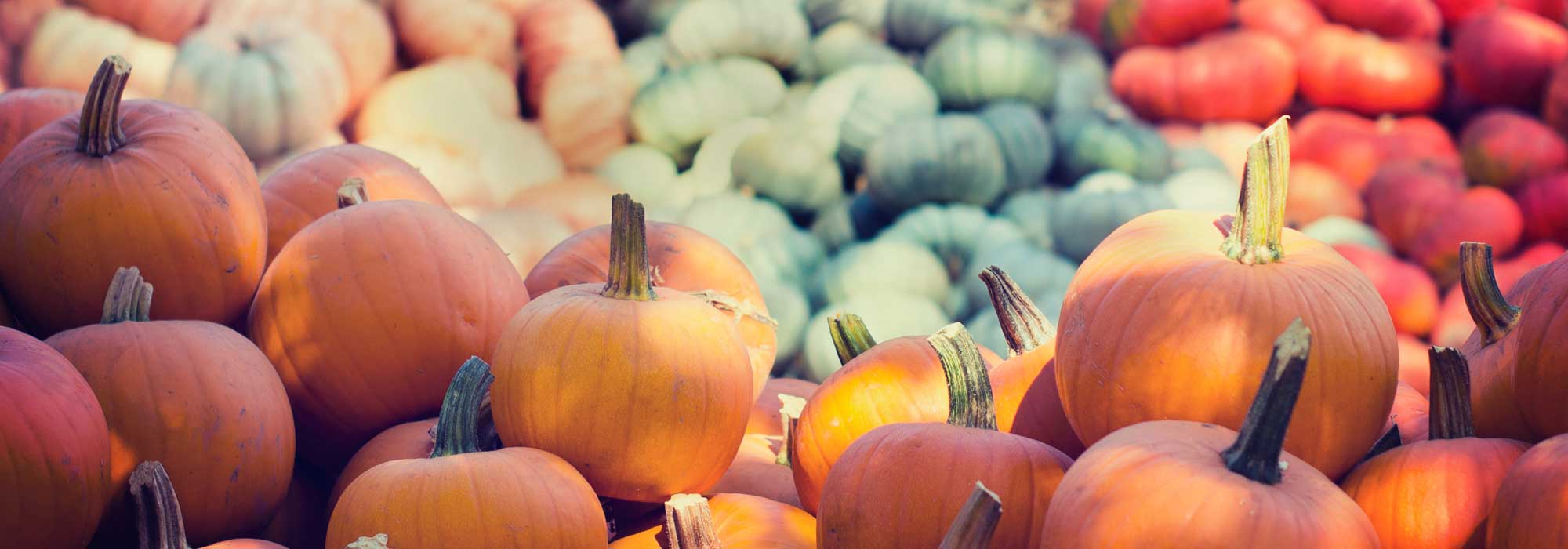
Squashes: sowing, planting, growing, harvesting
Contents
Squashes in a nutshell
- There is an astonishing variability of shapes, colours, sizes, and flavours among squashes! Indeed, there are numerous species and varieties: pumpkin, squash, potimarron, butternut, pâtisson, giraumon, calabash, etc…
- In the garden, squashes are robust and easy to grow; they thrive in sunny locations, with roots in soil rich in organic matter, loose, deep, and cool.
- Sowing takes place from April, in buckets in a warm environment, or directly in the ground from May. The plants are installed in the garden after the last risk of frost, around mid-May.
- Many varieties are sprawling and can spread over several metres, or climb on supports thanks to their tendrils, so ensure there is enough space for planting.
- Most varieties can be stored for many months after the harvest, making them an ideal vegetable for winter provisions.
- Squashes have the advantage of being low in calories but rich in vitamins and minerals, as well as antioxidants, especially for those with well-orange flesh.
The word from our expert
Squashes are fruit-vegetables from the large family of Cucurbitaceae, which includes many vegetable plants such as cucumbers, melons, watermelons, etc. There is a great diversity of both species and varieties of squashes: orange, green, red, yellow, black, or even blue, smooth, ribbed, warty, with tender skin, etc. Squashes offer us an astonishing variability of shapes, colours, and sizes as they hybridise with remarkable ease. Humans have created numerous varieties, which is why today there is such a diversity, estimated to be several hundred varieties. In common language, winter squash refers to all kinds of pumpkins, potimarrons, potirons, etc., which have tough skin and delicately sweet flesh. Summer squashes or courgettes refer to the different varieties that are harvested while still young when the skin is still tender. The latter are consumed with the seeds.
The cultivation of squashes is very simple, even for beginner gardeners. It is done in full sun and in loose soil rich in organic matter, fairly deep and which remains cool on the surface in summer. A summer mulch is, in this regard, highly recommended to maintain this coolness. It will also help keep the squashes less in direct contact with the soil, which can lead to rot on the fruits.
Sowing squashes is possible and recommended for all amateur gardeners. It is economical and just as simple as growing courgettes in general. It is preferably done in buckets from April to obtain plants ready to be planted in the garden in May. It can also be done in place, starting from May.
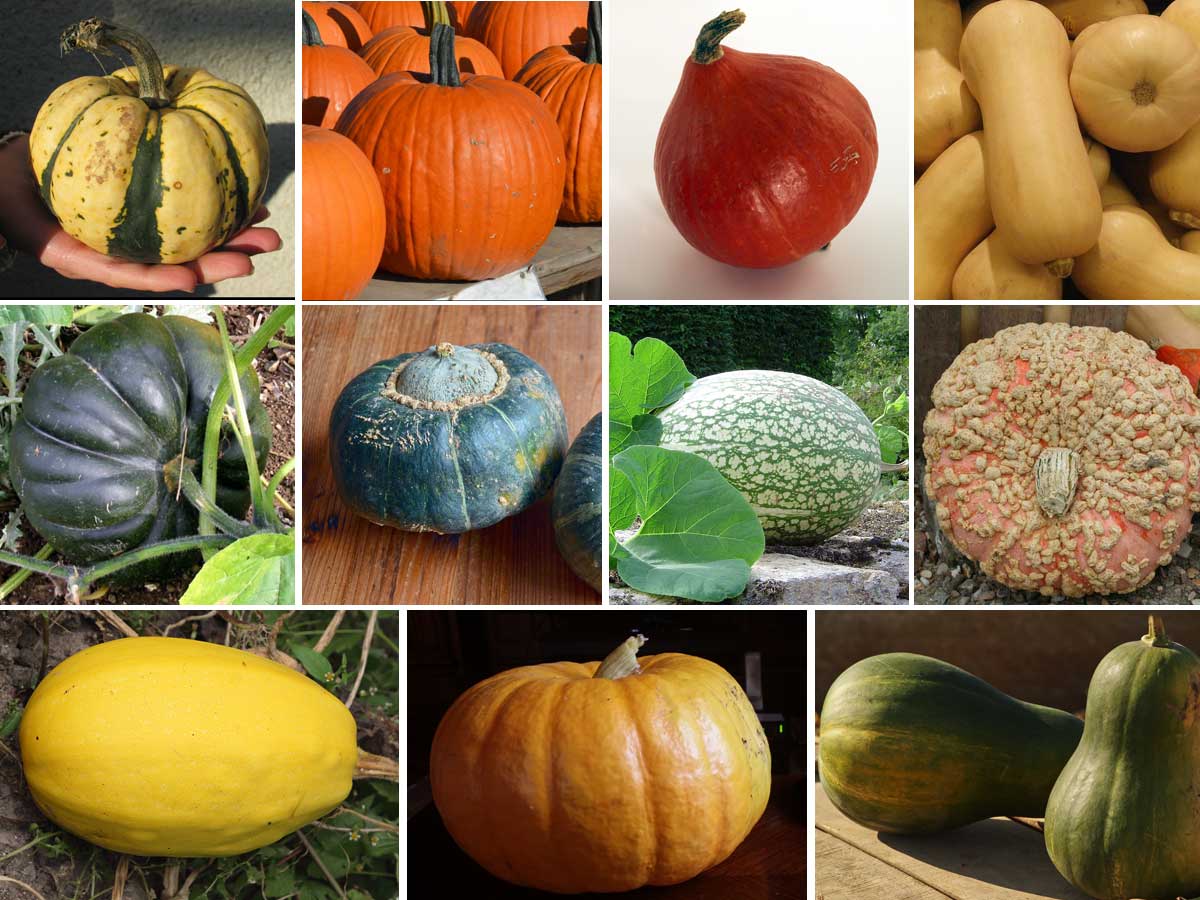
Some squashes: Patidou – Pumpkin – Potimarron – Butternut – Musquée de Provence – Buttercup – Siam squash – Warty squash from Eysines – Spaghetti squash – Potiron – Sucrine du Berry
Description and Botany
Botanical data
- Latin name Cucurbita sp.
- Family Cucurbitaceae
- Common name Squash
- Flowering Annual
- Height up to 10 years
- Exposure Sun
- Soil type rich, loose, deep, cool in summer
- Hardiness 0°C
All squashes of the genus Cucurbita are native to America, while those of the genus Lagenaria, namely the gourd, are native to Africa. Regarding Cucurbita, all wild forms are bitter, so it is highly likely that the earliest forms of domestication focused on selecting seeds rich in lipids and proteins. The oldest remains of C. pepo date back to 8000 BC in Mexico, and then 5500 BC in the state of Tamaulipas. As for C. moschata, remains date back to 7000 BC also in Mexico and Peru (3000 BC). All the different species thus originate from a large geographical area from South America to Central America.Squashes were introduced to Europe in the 16th th century with Christopher Columbus. They were accepted and cultivated very quickly, unlike tomatoes and potatoes!
In etymology, the term “squash” derives from the Latin “Cucurbita“, which also gave rise to the word “gourd”.
There are about fifteen species in the genus Cucurbita, of which four are the most cultivated in our gardens. These include Cucurbita pepo, Cucurbita moschata or musky squashes, Cucurbita maxima, and finally Cucurbita argyrosperma.
Here are some details about the main species:
- The Cucurbita pepo: these are the most represented in gardens, including certain pumpkins, zucchinis, pattypans, etc. They are generally recognized by their rigid, lobed leaves and their angular peduncle with at least 5 ribs that do not widen at the point of attachment to the fruit.
- The Cucurbita moschata or musky squashes: they have soft leaves. The peduncle is very ribbed and visibly widens at the point of attachment to the fruit. The leaves are heart-shaped.
- The Cucurbita maxima: these are mainly the potimarrons, pumpkins, and giraumons. Their peduncle is rounded and has a somewhat spongy appearance. As the name of the species suggests, it mainly concerns varieties with large fruits. The leaves have 5 lobes.
- The Cucurbita argyrosperma: very rarely found in our gardens, they show trilobed leaves and a very thick, robust, and non-ribbed peduncle.
Currently, there are several hundred varieties of squashes cultivated around the world.
Squashes belong to the large family of Cucurbitaceae, they are generally sprawling, with their long stems they can crawl several meters on the ground or cling to any support using their tendrils.
The flowers are relatively large, yellow, and campanulate in shape. They are monoecious plants, meaning they bear both male and female flowers on the same individual. Female flowers are distinguished from male flowers by their inferior ovary located beneath the flower, which is the unformed fruit. Male flowers do not have this ovary; they are borne on a long peduncle.
Allogamous, squashes favour cross fertilization. On the same plant, male flowers appear first, and once faded, it is the turn of the female flowers to open. This cycle repeats several times during the season. Through this strategy, squashes thus promote fertilization from other plants of the same species. They are also entomophilous, meaning they use insects as pollination vectors. The flowers open only once for about 3 hours, a relatively short time for fertilization!
The fruit is a berry, also called “pepo” by botanists. A great diversity of shape, colour, and size can be appreciated, depending on the species and varieties.
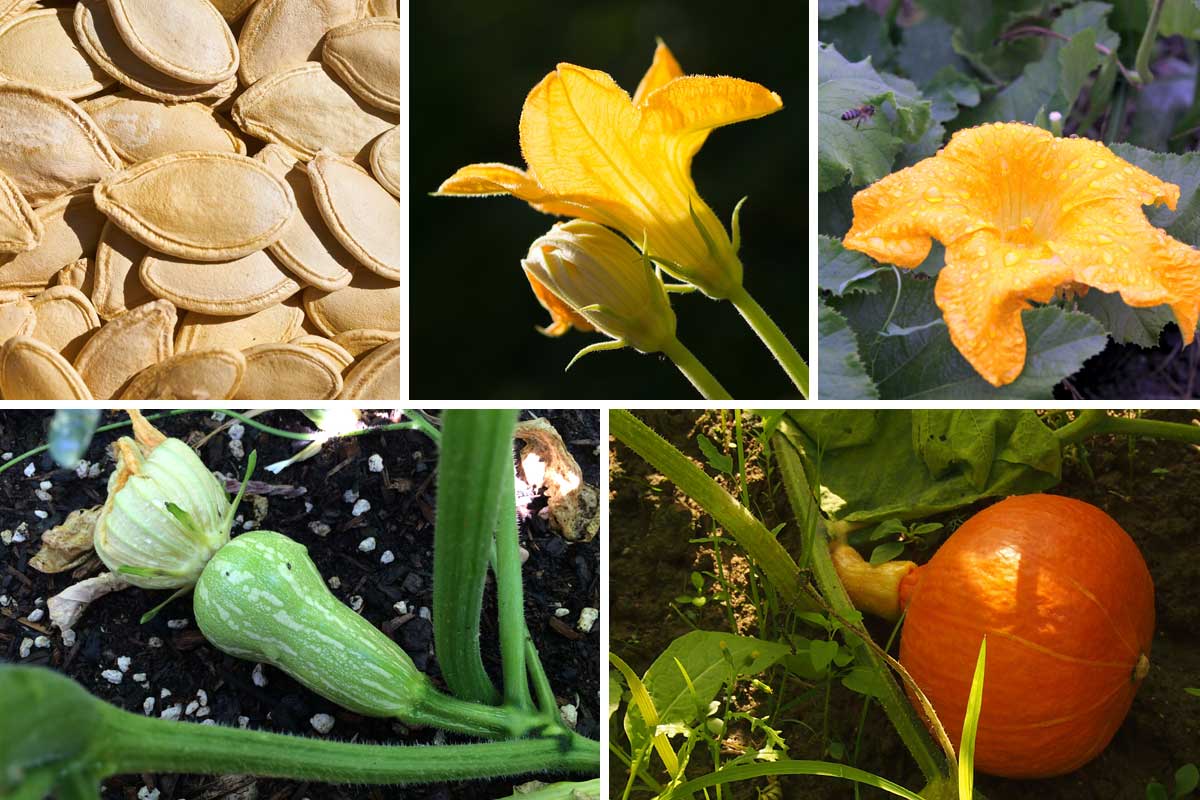
Squash seeds – Male flower – Female flower – A young butternut and a potimarron
Squash varieties
Here is my non-exhaustive selection of varieties chosen for their taste quality, originality, and good success in the vegetable garden. Feel free to check out our wide range in the shop to discover more!
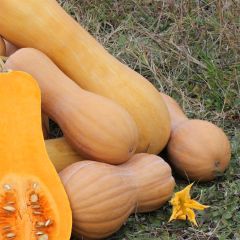
Squash Waltham Butternut - Cucurbita moschata
- Flowering time August, September
- Height at maturity 45 cm
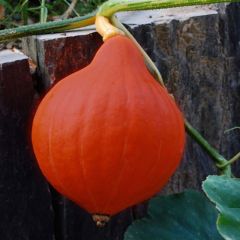
Kabocha Squash Red Kuri - Ferme de Sainte Marthe seeds
- Flowering time July to October
- Height at maturity 30 cm
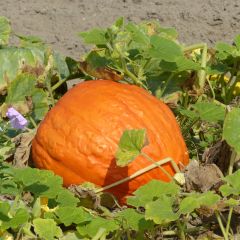
Pumpkin Atlantic Giant - Giant Squash - Cucurbita maxima
- Flowering time July to October
- Height at maturity 60 cm
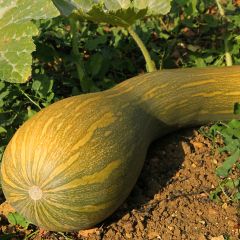
Squash Longue de Nice - Vilmorin Seeds
- Flowering time June to August
- Height at maturity 40 cm
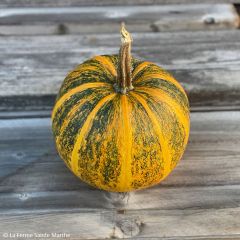
Cucurbito pepo Lady Godiva organic seeds - Pumpkin
- Flowering time June to August
- Height at maturity 50 cm
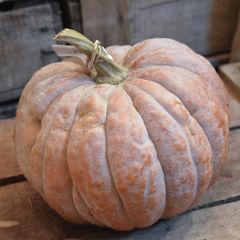
Squash Black Futsu - Ferme de Sainte Marthe Seeds
- Flowering time July to September
- Height at maturity 45 cm
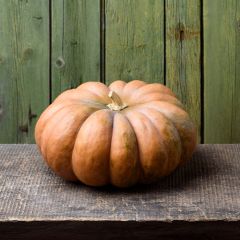
Winter Squash Muscade - Musquée de Provence
- Flowering time July to October
- Height at maturity 40 cm
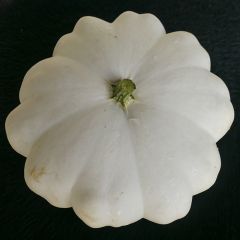
White Pattypan Squash - Cucurbita pepo
- Flowering time May to July
- Height at maturity 60 cm

Spaghetti Squash - Cucurbita pepo
- Flowering time June to August
- Height at maturity 45 cm
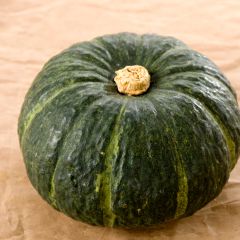
Squash Buttercup Burgess
- Flowering time June to August
- Height at maturity 50 cm
Discover other Squash, Courgette and Pumpkin seeds
View all →Available in 0 sizes
Available in 1 sizes
Available in 1 sizes
Available in 1 sizes
Available in 1 sizes
Available in 1 sizes
Available in 1 sizes
Available in 1 sizes
Available in 1 sizes
Available in 2 sizes
Sow the squashes
Where and when to sow squashes?
Sowing squashes is easy to do, it can be done in buckets or directly in the ground.
Squashes are sown:
- from mid-April to mid-May in a warm environment, indoors or in a heated shelter,
- from mid-May to mid-July directly in the ground.
How to sow squashes?
You can prepare young plants to be planted in the vegetable garden once all risk of frost has passed or sow directly in place.
- Preparing young plants:
- Fill buckets with seed compost
- Place two seeds per pot (flat) pushing them down to a depth of about 2 cm and cover with compost,
- Water for the first time, using light rain or by capillarity by filling the saucer with water and allowing the water to rise for at least a quarter of an hour, then remove the excess water.
Keep warm and in the light, at around 20 °C and maintain the substrate moist but not waterlogged until germination, which generally takes between 5 and 8 days. When the young plants are well developed, thin them out by keeping only the strongest seedling.
- Sowing directly in the ground (after mid-May):
Sowing is done in clusters, in weeded and loosened soil, spacing the plants one metre apart in all directions:
- Dig holes 2 to 3 cm deep,
- Place three seeds per hole and cover with fine soil and lightly compact,
- Water for the first time, using light rain to avoid displacing the seeds,
- Keep the soil moist until germination.
After germination, when the young plants are well developed, thin them out to keep only the best plant from each cluster.
→ Learn to succeed in sowing loofah squashes or vegetable sponges in our tutorial
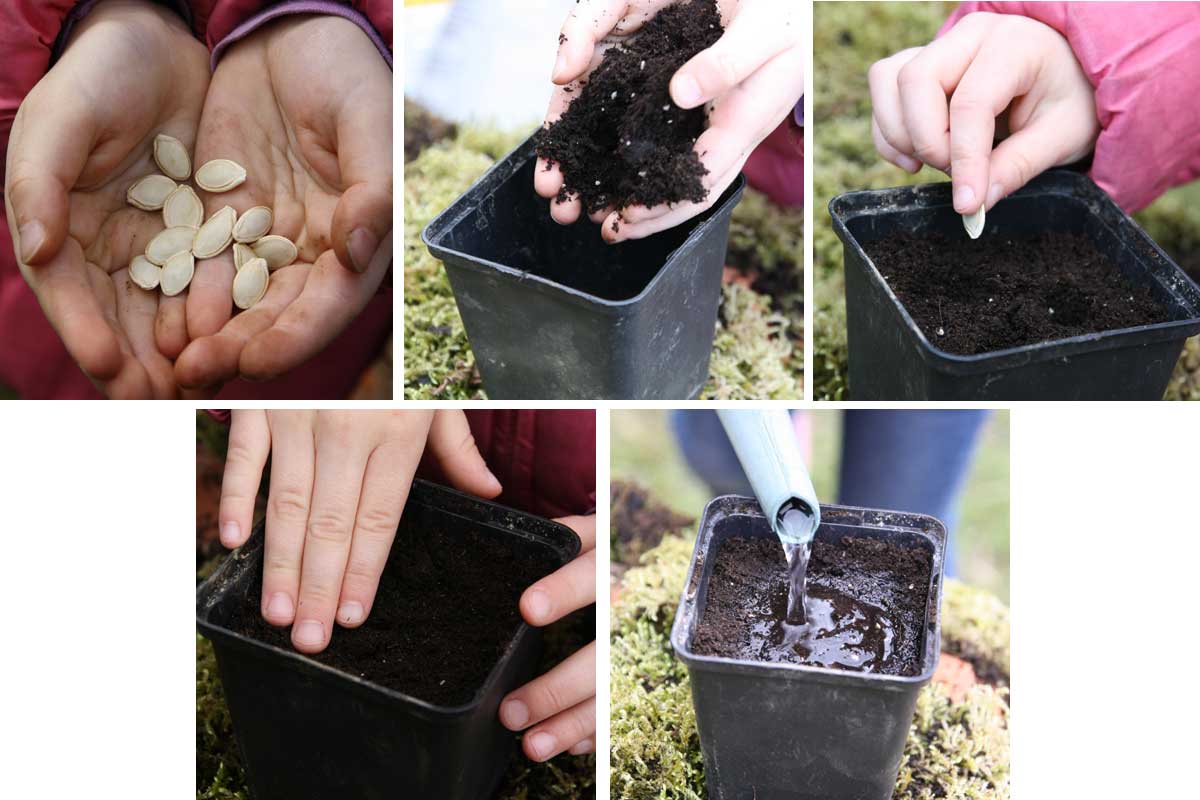
Sowing squash seeds in buckets
Planting squashes
When to plant squashes?
Planting of squashes takes place from May, preferably after the Ice Saints, in the regions most sensitive to cold. In the South and along the coast, they can be planted as early as mid-April, monitoring the weather and possibly protecting them from the last frosts with a cover. It is possible to continue planting until July.
The planting distances are 1 to 2 m between each young plant, refer to the seed packets.
How to plant squashes?
Squashes require a well-manured soil, previously enriched with an addition of compost or well-rotted manure of 3 to 4 kg per m2. This is a bulky crop for which a minimum area of one square metre per young plant should be reserved.
To plant your squashes:
- Dig a hole corresponding to the volume of the root ball,
- Place the root ball and cover it with soil,
- Firm the soil and water to keep it moist,
- To aid recovery, water at the base regularly.
Cultivation, care and associations
All squashes should be grown in sunny locations, as they are greedy vegetables that thrive in rich, organic, loose, deep, and cool soil. Indeed, squashes particularly enjoy slightly moist soils, so remember to mulch around the plants, especially during the height of summer. It is also advisable to add a generous amount of compost, around 3 to 4 kg per m2, before planting.
For maintenance, it is important to hoe and cultivate, especially at the beginning of the growing season; afterwards, the dense foliage of the squashes limits the growth of “weeds”. When the fruits develop, it is useful to place a slate or tile under the fruits, preventing them from coming into direct contact with the soil, thus avoiding rot due to moisture.
The squash is part of the most famous of vegetable associations, the milpa, also known as the three sisters association. These three plants provide mutual benefits: nitrogen residue from the bean (after harvesting), the corn serves as a support for the bean, and the squash protects the soil with its imposing foliage, providing more coolness, creating a microclimate, and competing with adventive plants. To learn more about the milpa, check out our article on corn.
Squash enjoys the presence of Liliaceae such as chives, onions, or shallots, as well as Fabaceae like beans and peas. However, the squash-cucumber pairing may be detrimental to both parties.
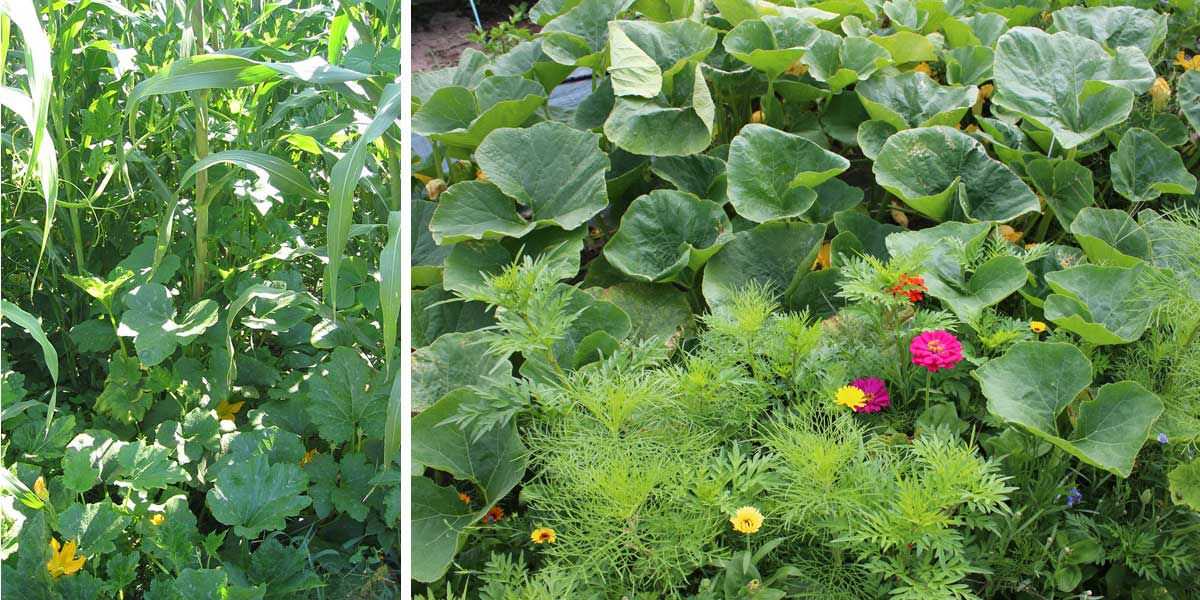 Squash associated with corn – Squashes and flowers, a good association as well































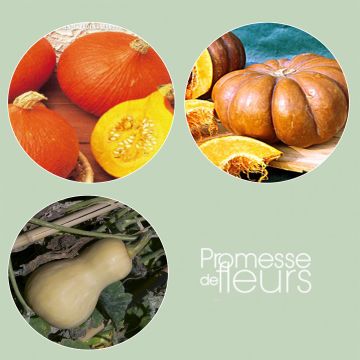
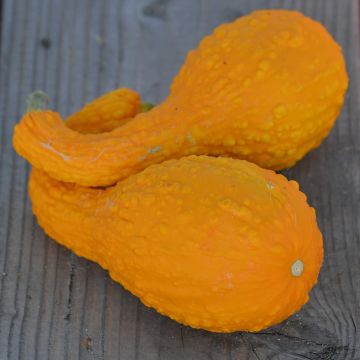
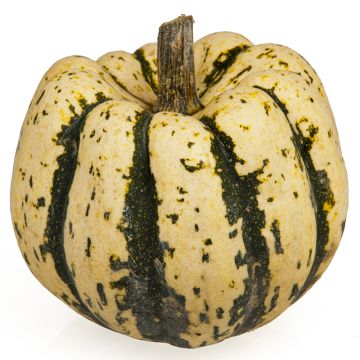
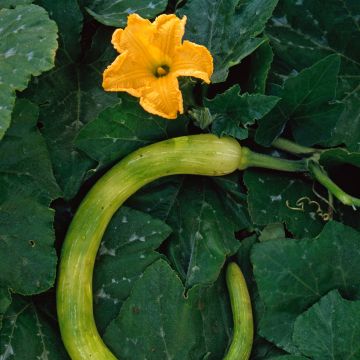
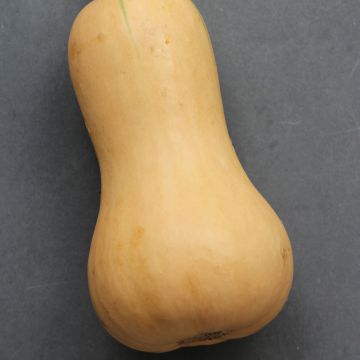
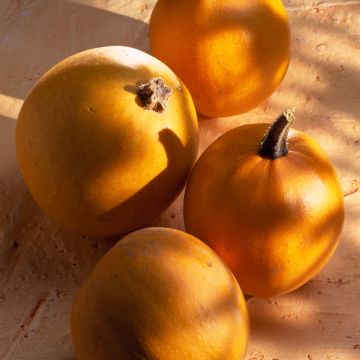
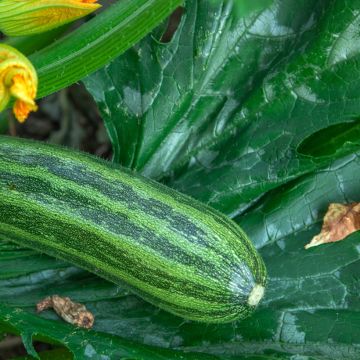

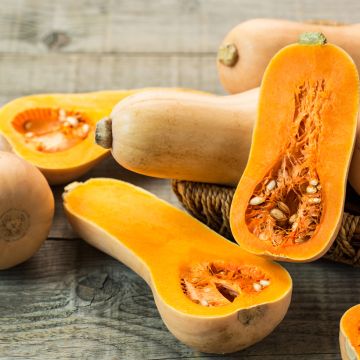

Comments